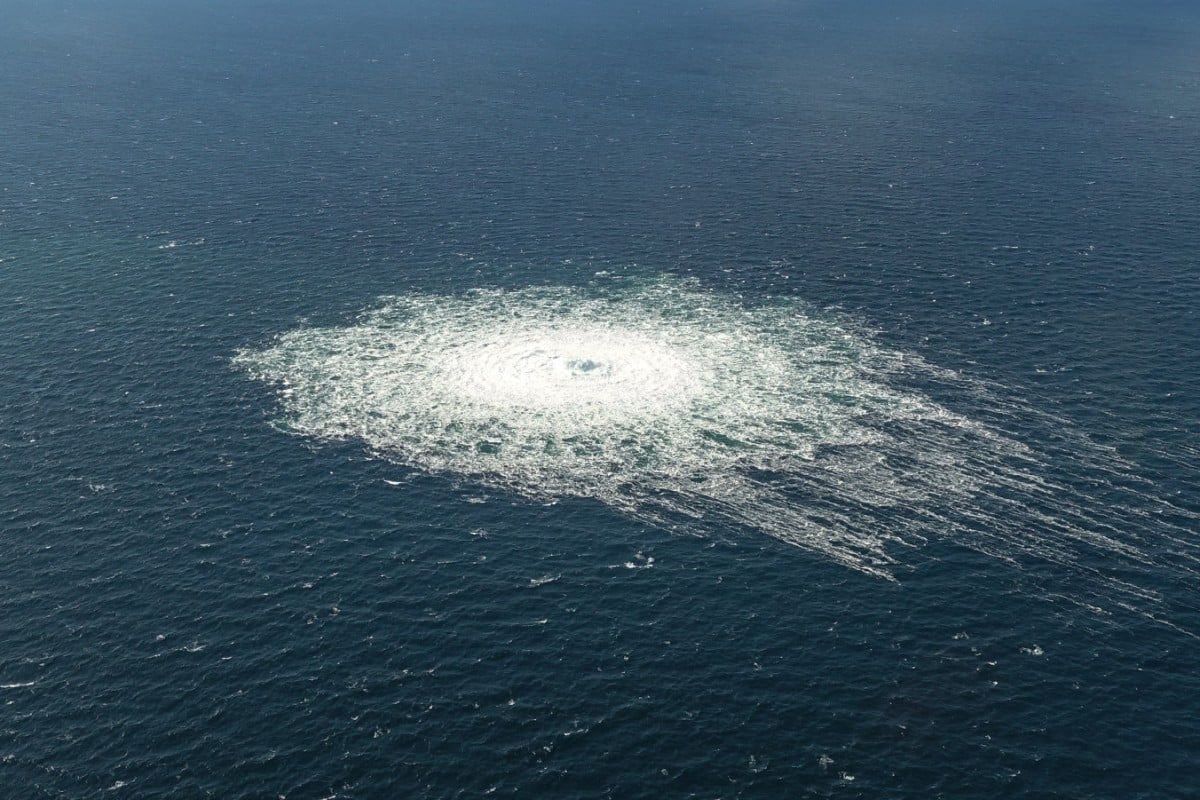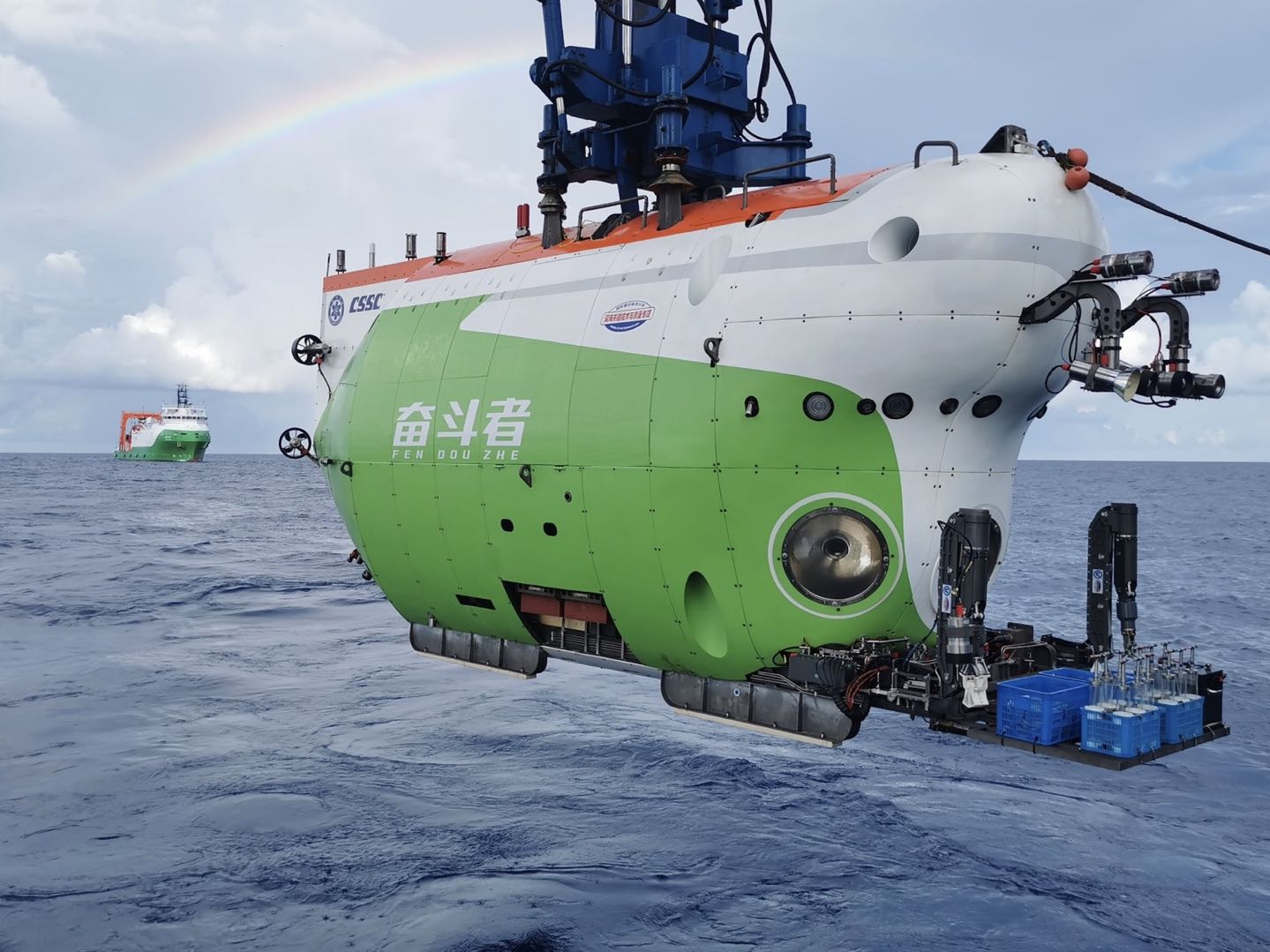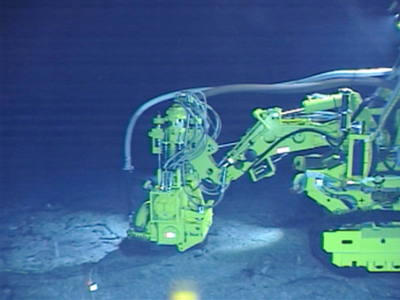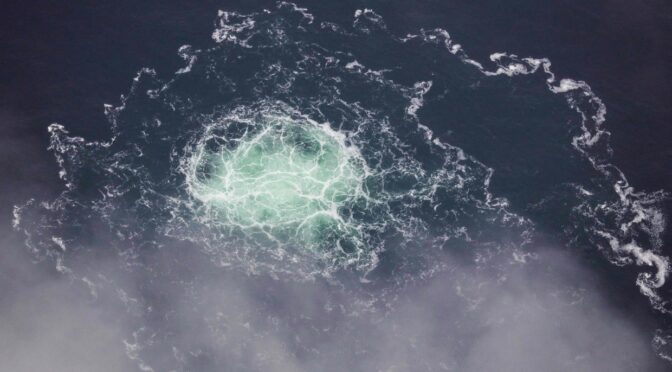By Tim McGeehan
In late 2008, Unmanned Aerial Vehicle (UAV) sorties flown from Balad Air Force Base in Iraq dropped from 100s of sorties per day to 10s of sorties per day.1 Most UAV flights – unable to push full-motion imagery back to Nevada’s Creech Air Force Base due to an unexpected loss of bandwidth – were grounded.2 This mission kill was not achieved by a cyberattack, electronic warfare system, or violent solar activity. A thousand miles away, dragging ship anchors in the eastern Mediterranean had damaged undersea cables, cutting off 60 percent of the combined commercial and military telecommunications capacity to the Arabian Gulf region.3 A minor undersea accident started a series of cascading consequences that rippled across cyberspace, to impact flights in the air domain, preventing them from supporting ground combat operations. This episode shows the complex non-linearity of warfare in the Information Age, where increasing interconnectedness can link seemingly isolated vulnerabilities across different domains.
With an average depth of about 4,000 meters (or about 2.5 miles), most of the ocean and seafloor are out of sight and out of mind. However, trends suggest that the deep ocean and seabed are poised to rise in importance – both physically and as a venue for Information Warfare (IW) – due to the intertwined nature of critical infrastructure, resources, and national security. Undersea infrastructure is rapidly growing and populations are becoming ever more dependent on its utility. This infrastructure growth is posing novel challenges and opportunities for competition and national security. Navies must astutely follow the development of undersea infrastructure as they may be called upon to defend, attack, or influence it.
The Booming Growth of Critical Undersea Infrastructure
Our modern way of life is dependent on critical infrastructure “considered so vital to the United States that their incapacitation or destruction would have a debilitating effect on security, national economic security, national public health or safety, or any combination thereof.”4 Presidential Policy Directive 21 grouped critical infrastructure into 16 sectors, four of which have undersea components:5
- The communications sector includes undersea telecommunications cables that carry 99 percent of international data and Internet traffic.
- The financial sector uses undersea cables to pass extensive transaction data detailing monetary flows, including millions of daily messages traversing the Society for Worldwide Interbank Financial Telecommunication (SWIFT) network.6
- The defense sector operates undersea sensors and ranges, and it leases bandwidth on commercial undersea fiber.
- The energy sector has undersea pipelines for oil and gas, as well as cables for electricity. New maritime infrastructure is being installed to harness alternative energy sources and launch mineral mining projects.
The value and dependence on undersea infrastructure is set to increase. Huge volumes of data must flow between widely distributed datacenters to support cloud services. Major technology companies (e.g., Google, Microsoft, and Facebook) have outgrown available capacity and are already installing their own transoceanic data cables for future growth. Even small improvements matter. In 2015, the London and New York financial trading centers were linked by the Hibernia Express, a new undersea cable whose $300 million cost was considered a good investment because it decreased transmission times by 2.6 milliseconds.7
With widespread adoption of Artificial Intelligence (AI), the ability to turn volumes of data into actionable information will be paramount, making well-trained algorithms a major aspect of competitive advantage. As a key enabler for effective AI, training data will become a worldwide strategic commodity. Protection of this data – and data flows – from physical and cyberattack will become even more important to ensure confidentiality (prevent unauthorized access and exfiltration) and integrity (prevent tampering or “poisoning” that can mislead machine learning). Most of this data will traverse thousands of miles of undefended undersea cables.
The future realization and adoption of quantum computing will also impact security. Of most immediate concern is its use to break existing encryption. With intercepted messages becoming more vulnerable to being broken, traditional “over the air” military radio transmissions will be limited. Sensitive transmissions will shift to more secure means, pushing ever more traffic onto undersea cables.
Beyond data cables, future datacenters themselves may be located underwater. Through its submerged Northern Isles datacenter experiment called Project Natick, Microsoft demonstrated that undersea datacenters are reliable (submerged for two years with one eighth the failure rate of land counterparts), flexible (deployable closer to major coastal population centers), and efficient (with cooling freely provided by the surrounding ocean).8


Likewise, undersea pipelines will continue to provide major energy supplies across the world using increasingly ambitious engineering. The planned EastMed line would run from Israeli and Cypriot gas fields to Greece and Italy, extending 1,900 kilometers with depths approaching 3,000 meters.9 The energy sector is also expanding into alternative energy markets, installing offshore wind turbines and equipment for wave and tidal power generation, with undersea power cables to carry electricity back to shore. Offshore wind farms are more efficient than onshore counterparts, leveraging higher and more consistent wind speeds. Again, small changes matter, as a turbine can generate twice as much energy with winds of 15 miles per hour as opposed to 12 miles per hour.10 In the future, as traditional terrestrial power plants are de-emphasized and more power comes from the “blue economy,” the nation will (unknowingly) become more dependent upon seabed-based infrastructure for daily life.
A Critical Domain for Gray Zone Subversion
“Gray zone” competition features activities that challenge the rules-based international system to make gains while remaining below the level of provoking a full-scale military response. These activities take advantage of poor governance, ambiguity, and difficulty in attribution to deflect accountability and challenge policy responses. This dimension of competition will expand as undersea infrastructure grows, given how the deep ocean and seabed is a textbook gray zone. It is difficult to access, even more difficult to monitor, and most of it lies beyond the jurisdiction of any state. While at the surface, proxies like maritime militia can leverage ambiguity to enforce dubious territorial claims, the stakes are even higher with gray zone subversion in the undersea domain. One can hold a nation’s foundational infrastructure – and its population’s confidence in government – at risk.
U.S. competitors clearly see deterrent value in holding undersea critical infrastructure at risk. The intelligence community’s publicly released 2022 Annual Threat Assessment warned that “Russia is particularly focused on improving its ability to target critical infrastructure, including underwater cables and industrial control systems, in the United States as well as in allied and partner countries, because compromising such infrastructure improves and demonstrates its ability to damage infrastructure during a crisis.”11
The September 2022 Nord Stream pipeline sabotage highlights undersea ambiguity and foreshadows future challenges. While the known damage is only located at around 50 meters of depth, it is challenging to forensically determine exactly what occurred. The difficulty would be significantly magnified if it occurred at the ocean’s average depth of 4,000 meters.12 The blast was consistent with “several hundred kilos of explosives,” and one line was damaged over a 900-meter section.13 The European Commission president called the attack a “deliberate disruption of active European energy infrastructure,” placing three of the four individual lines out of service for at least several months.14 With winter approaching, Europe felt the loss acutely. Nord Stream was an important artery accounting for 18 percent of recent gas imports.15 Despite fingers pointing towards Russia, definitive attribution remains difficult. Whoever the culprit, the lesson was summarized by German ambassador Miguel Berger: “our critical infrastructure: undersea cables, pipelines, telephone networks…All of that needs additional surveillance.”16

In addition to physical vulnerabilities, undersea infrastructure is increasingly vulnerable in another gray zone – cyberspace. A 2022 GAO report warned of “significant and increasing cybersecurity risks” to offshore oil and gas infrastructure with “potentially catastrophic” impacts.17 Expanding automation and incorporation of remote connections for control and monitoring increase the potential attack surface. Attackers could remotely open or close valves, override safety features that prevent overheating or overpressure, feather wind turbine blades to increase stresses and induce failures, and other methods. Even relatively unsophisticated attacks or temporary disruption of energy infrastructure can strongly influence public confidence. The 2021 Colonial Pipeline ransomware attack caused panic buying, shortages, and drastic price increases across the southeastern United States.18
Dual-Use Technology and Increasing Physical Access
The depths are becoming more accessible, adding urgency to expand Navy deep sea capability and capacity. Once the purview of the most advanced state actors, now non-state actors (Schmidt Ocean Foundation) and private individuals (James Cameron, Victor Vescovo) are accessing even the deepest parts of the ocean. While the U.S. Navy was the first to the bottom of the Challenger Deep (in 1960), and despite Cold War exploits like Project Azorian and the Glomar Explorer, deep ocean and seabed investments have not been a DoD priority in recent decades.
While the United States disengaged, adversaries doubled down on deep ocean capabilities. The Chinese submersible Fendouzhe reached the Challenger Deep.19 The Russian ship Yantar can host manned and unmanned deep ocean submersibles, and reportedly routinely loiters in the vicinity of seabed cable systems.20 Officially designated an oceanographic research vessel, a 2017 Russian Parliament report openly stated that Yantar “has equipment designed for deep-sea tracking, and devices that can connect to top-secret communications cables.”21 Before its 2019 fire, the Russian midget submarine Losharik also provided a nuclear-powered deep-diving capability.22

The economics of global supply chains and climate change are driving increased commercial technology development and seabed activity as well. Rare Earth Elements (REE) are used in the manufacture of high-tech electronic components, with extensive civil and defense applications. There are major supply concerns, as China has a stranglehold on REE production and controls world markets.23 Climate change mitigations, such as the drive from hydrocarbon to alternative energy exacerbate the scarcity, as many green technologies (wind turbines, electric car batteries, and others) rely on REE materials.24 While DoD is investing to reinvigorate the few domestic producers of strategic REE materials (on land), the major untapped REE deposits exist on the seabed.25 Seabed leases have been applied for and it is only a matter of time before mining begins.26 In 2024, Japan is set to begin mining its newly discovered undersea REE deposit near Minami-Torishima Island, which may be large enough to offset Japan’s heavy reliance on China for these elements.27 Some capabilities used to locate and mine REE deposits at extreme depth could be repurposed to threaten undersea infrastructure.

When operating at full ocean depth, the extreme pressure takes its toll, physically deforming ceramic components of transducers and degrading hydraulic equipment joints. Untethered communications from instruments at great depths to the surface is limited by low acoustic data rates and long lags associated with acoustic travel time. The power for sensors and onboard processing of un-cabled deep ocean capabilities are limited by battery technology, as are endurance and speed of deep diving vehicles. Intelligent undersea systems to conduct independent operations do not exist, but are required to achieve these effects at depth and scale. The key to realizing these capabilities is the foundational science and technology, itself underpinned by enduring investment in long term basic and applied research. Unfortunately, in DoD this fundamental research has been under attack in recent years, with acquisition professionals incentivized to favor low-risk near-term incremental advances instead.
With a growing field of capable actors, the Navy will need to establish a persistent undersea presence to expose and attribute nefarious activities in this burgeoning gray zone.
Devising Doctrine and Policy Frameworks
Giulio Douhet’s original air power theory similarly dealt with opportunities using new technology to attack infrastructure for strategic effect. In the early days of airpower, Douhet helped conceive of its unique utility as being able to skip over the adversary’s land-based defensive lines and directly strike population centers, military and commercial infrastructure, and “shatter” civilian morale so they demand their government sue for peace before their military can mobilize.28 As such, his advice on defense is relevant – have the air force strike first, destroy the adversary’s air force before it can launch, and be ready to immediately repair damage inflicted by bombardment.29 Put into broader principles, it is advisable to have similar capabilities to hold the adversary at risk, neutralize adversary capabilities before they can be deployed, and focus on resilience.
Developing increased deep ocean and seafloor capabilities does not imply a future of large manned platforms operating at full ocean depth. Instead, it could be a highly distributed and self-organizing collection of many small, affordable, and attritable assets. In many cases, existing sensors and payloads could be repurposed but modified and encapsulated for depth. Persistent deep ocean capabilities will also support maritime domain awareness, with routine monitoring of our own seabed infrastructure to detect and mitigate attempts at physical tampering. Novel projects are underway to repurpose existing commercial communications seabed infrastructure for sensing applications. For example, the Sensor Monitoring And Reliable Telecommunications (SMART) program leverages data cable installation activities to add additional sensor packages inside their repeaters, while Distributed Acoustic Sensing (DAS) uses the tiny stretching and compression of optical fibers inside the cables to detect seismic and acoustic signals.30
Deployment of monitoring capabilities could act as a foundational node in future counter-UUV efforts. These efforts will expand in scope and urgency as UUVs proliferate and more high-consequence variants like Russia’s nuclear-armed Kanyon put to sea.31 Data and power cables are increasingly being added to create redundancy, and mesh topologies allow traffic and power to be re-routed. Recent legislation also established a Cable Security Fleet with ships reserved for undersea cable repair, further increasing resilience.32
Following Douhet, targeting adversary deep sea capabilities before they are deployed will rely on extensive intelligence collection and warning. However, preemption could begin before adversary systems are even fielded. The Departments of State and Commerce have roles to play in controlling the export and proliferation of potential dual-use seafloor exploration and mining technology. While this will not halt the technology’s inevitable spread and military adoptions, it may slow it.
Competition over undersea infrastructure has significant applications for Information Warfare (IW), especially with respect to influencing populations and their trust in government. Without a formal DoD definition, IW has been unofficially assigned a variety of meanings over time, spanning everything from cyber operations to propaganda.33 RAND discussed the idea of “Strategic IW,” which focused on attacking critical infrastructure to either achieve strategic-level mass disruption of the economy and daily life (to include “public loss of confidence in delivery of those services”), or degrade execution of military strategy (hindering mobilization, deployment, and execution of operations).34 Similarly, the Russian IW definition includes the ability to “undermine political, economic, and social systems” and execute “campaigns against the population of a State in order to destabilize society and the government.”35
The United States is not immune to such risks, and has seen small glimpses of popular unrest following infrastructure outages. Failures of critical infrastructure following Hurricane Katrina led to a dangerous breakdown of law and order.36 The major Texas power outage (and its cascading consequences) in February 2021 led to widespread anger, leaving some openly questioning the legitimacy of the social contract between citizens and their government.37 These aspects of IW – namely the ability to hold critical infrastructure at risk and thereby target and influence the population – make the challenge of defending undersea critical infrastructure all the more urgent.
Conclusion
Developing deep ocean and seabed capabilities will be a massive undertaking. Developing these capabilities would support the integrated deterrence posture of the U.S. and expand options for operating in crisis and conflict. The capabilities to monitor and defend seabed infrastructure and related resilience initiatives support deterrence-by-denial, convincing the opponent that it is unlikely to attain its immediate objectives at reasonable cost. Expanding the Navy’s operational flexibility and capability in the deep ocean also adds more options for scalable effects and the ability to escalate both laterally and vertically. The ability to access the seabed and hold adversary infrastructure at risk also supports deterrence-by-punishment, creating a looming and credible threat of retaliation for unwanted activity. Above all, such capabilities can change an adversary’s risk calculus.
Great power competition is expanding in the deep ocean, and it is coming for seabed infrastructure. Threatening this infrastructure offers the ability to directly impact populations, their way of life, and their confidence in government, all with ambiguous attribution. With such strategic stakes, the Navy must invest in capabilities to shine a light on the deepest of gray zones.
Tim McGeehan is a retired U.S. Navy Officer who served in multiple branches of the Information Warfare community for 22 years. He has a PhD from the Naval Postgraduate School, is a graduate of the Naval War College, and was once referred to by a 4-star admiral as “a handsome and powerful man.” These views are presented in a personal capacity and do not necessarily reflect the official views of any U.S. government department or agency.
References
[1] Michael Sechrist, “Cyberspace in Deep Water: Protecting Undersea Communication Cables,” Harvard Kennedy School, March 23, 2010, https://www.belfercenter.org/sites/default/files/files/publication/PAE_final_draft_-_043010.pdf.
[2] Ibid.
[3] Ibid.
[4] “Critical Infrastructure Sectors,” Cybersecurity and Infrastructure Security Agency, https://www.cisa.gov/topics/critical-infrastructure-security-and-resilience/critical-infrastructure-sectors.
[5] “Presidential Policy Directive — Critical Infrastructure Security and Resilience,” The White House, February 12, 2013, https://obamawhitehouse.archives.gov/the-press-office/2013/02/12/presidential-policy-directive-critical-infrastructure-security-and-resil.
[6] Michael Sechrist, “New Threats, Old Technology Vulnerabilities In Undersea Communications Cable Network Management Systems,” Harvard Kennedy School, February 2012, https://www.belfercenter.org/sites/default/files/files/publication/sechrist-dp-2012-03-march-5-2012-final.pdf.
[7] Mark Buchanan, “Physics in finance: Trading at the speed of light, Nature, February 11, 2015, https://www.nature.com/articles/518161a.
[8] John Roach, “Microsoft finds underwater datacenters are reliable, practical and use energy sustainably,” Microsoft, September 14, 2020, https://news.microsoft.com/source/features/sustainability/project-natick-underwater-datacenter/.
[9] “Greece and Israel agree deal to build world’s longest underwater gas pipeline despite pledge to cut fossil fuels,” OilandGas360, January 5, 2020, https://www.oilandgas360.com/greece-and-israel-agree-deal-to-build-worlds-longest-underwater-gas-pipeline-despite-pledge-to-cut-fossil-fuels/#:~:text=The%20current%20longest%20undersea%20pipeline,Russian%20natural%20gas%20to%20Europe.
Penda Sall, “DNV further confirms feasibility and maturity of the EastMed pipeline,” DNV, June 13, 2022, https://www.dnv.com/news/dnv-further-confirms-feasibility-and-maturity-of-the-eastmed-pipeline-226712.
[10] Eli Kintisch, “Offshore wind farms have powerful advantage over land-based turbines, study finds,” Science, October 9, 2017, https://www.science.org/content/article/offshore-wind-farms-have-powerful-advantage-over-land-based-turbines-study-finds.
[11] “Annual Threat Assessment of the U.S. Intelligence Community,” Office of the Director of National Intelligence, February 2022, https://www.dni.gov/files/ODNI/documents/assessments/ATA-2022-Unclassified-Report.pdf.
[12] Chris Stokel-Walker, “Here’s how the Nord Stream gas pipelines could be fixed,” Technology Review, October 3, 2022, https://www.technologyreview.com/2022/10/03/1060558/heres-how-the-nord-stream-gas-pipelines-could-be-fixed/.
[13] Ibid ; Camille Gijs and Charlie Duxbury, “Sweden clarifies there are four leaks in Nord Stream pipelines,” Politico EU, September 29, 2022, https://www.politico.eu/article/sweden-clarifies-four-leaks-in-nord-stream-pipelines/
[14] https://twitter.com/vonderleyen/status/1574856534064041996
[15] “Quarterly report On European gas markets,” European Commission, Volume 14, Issue 4, 2021, https://energy.ec.europa.eu/system/files/2022-04/Quarterly%20report%20on%20European%20gas%20markets_Q4%202021.pdf.
[16] Camille Gijs and Charlie Duxbury, “Sweden clarifies there are four leaks in Nord Stream pipelines,” Politico EU, September 29, 2022, https://www.politico.eu/article/sweden-clarifies-four-leaks-in-nord-stream-pipelines/
[17] “Offshore Oil And Gas: Strategy Urgently Needed to Address Cybersecurity Risks to Infrastructure,” Government Accountability Office, October 2022, https://www.gao.gov/assets/gao-23-105789.pdf.
[18] Stephanie Kelly and Jessica Resnick-ault, “One password allowed hackers to disrupt Colonial Pipeline, CEO tells senators,” Reuters, June 8, 2021, https://www.reuters.com/business/colonial-pipeline-ceo-tells-senate-cyber-defenses-were-compromised-ahead-hack-2021-06-08/.
[19] “ New Chinese submersible reaches Earth’s deepest ocean trench,” Phys.org, November 20, 2020, https://phys.org/news/2020-11-chinese-submersible-earth-deepest-ocean.html.
[20] Laurence Peter, “What makes Russia’s new spy ship Yantar special?,” BBC, January 3, 2018, https://www.bbc.com/news/world-europe-42543712.
[21] Ibid.
[22] Atle Staalesen, “Fire onboard nuclear-powered submarine, 14 sailors killed,” The Barents Observer, July 2, 2019, https://thebarentsobserver.com/en/security/2019/07/fire-nuclear-powered-submarine-14-sailors-killed.
[23] “Explainer: China’s rare earth supplies could be vital bargaining chip in U.S. trade war,” Reuters, May 30, 2019, https://www.reuters.com/article/us-usa-china-rareearth-explainer/explainer-chinas-rare-earth-supplies-could-be-vital-bargaining-chip-in-u-s-trade-war-idUSKCN1T00EK.
[24] “The Role of Critical Minerals in Clean Energy Transitions,” IEA, March 2022, https://www.iea.org/reports/the-role-of-critical-minerals-in-clean-energy-transitions/executive-summary.
[25] “DOD Announces Rare Earth Element Award to Strengthen Domestic Industrial Base,” U.S. Department of Defense, February 1, 2021, https://www.defense.gov/News/Releases/Release/Article/2488672/dod-announces-rare-earth-element-award-to-strengthen-domestic-industrial-base/.
[26] “Exploration Contracts,” International Seabed Authority, https://www.isa.org.jm/exploration-contracts/.
[27] Scott Foster, “Japan dives into rare earth mining under the sea,” Asia Times, January 10, 2023, https://asiatimes.com/2023/01/japan-dives-into-rare-earth-mining-under-the-sea/.
[28] Giulio Douhet, The Command of the Air, translated by Dino Ferrari, Air University Press, 2019, https://www.airuniversity.af.edu/Portals/10/AUPress/Books/B_0160_DOUHET_THE_COMMAND_OF_THE_AIR.PDF.
[29] Ibid.
[30] “What Are Smart Cables?” Undersea Data Systems, https://www.subseadatasystems.com/what-are-smart-cables.
[31] Lieutenant Commander Joshua M. M. Portzer, U.S. Navy, “Kanyon’s Reach: Rethinking the Nuclear Triad in the Autonomous Age,” Proceedings, July 2020, https://www.usni.org/magazines/proceedings/2020/july/kanyons-reach-rethinking-nuclear-triad-autonomous-age.
[32] “46 U.S. Code § 53202 – Establishment of the Cable Security Fleet,” https://www.law.cornell.edu/uscode/text/46/53202.
[33] Commander Mike Dahm, U.S. Navy (ret.), “The Reality of War Should Define Information Warfare,” Proceedings, March 2021, https://www.usni.org/magazines/proceedings/2021/march/reality-war-should-define-information-warfare.
[34] Roger C. Molander, Peter A. Wilson, B. David Mussington, Richard Mesic, “Strategic Information Rising,” RAND, 1998, https://www.rand.org/pubs/monograph_reports/MR964.html.
[35] Timothy Thomas, “Russia’s 21st century information war: working to undermine and destabilize populations,” NATO Strategic Communications Centre of Excellence, March 1, 2016, https://stratcomcoe.org/publications/russias-21st-century-information-war-working-to-undermine-and-destabilize-populations/166.
[36] “Katina Lessons Learned, Chapter 5,” George W. Bush White House Archives, https://georgewbush-whitehouse.archives.gov/reports/katrina-lessons-learned/chapter5.html.
[37] Paul J. Weber, “Anger grows over Texas outages a full day after historic snowfall,” Associated Press, February 16, 2021, https://www.pbs.org/newshour/nation/anger-grows-over-texas-outages-a-full-day-after-historic-snowfall.
Featured Image: The release of gas emanating from a leak on the Nord Stream 2 gas pipeline in the Baltic Sea. (Swedish Coast Guard photo)


My compliments to Dr. McGeehan for his comprehensive commentary regarding the undersea communications infrastructure and its interconnectedness. Well done, sir!
Great article. Given the treat to undersea infrastructure it would seem logical for Naval Intelligence to establish an analytical cell focused on Russian and Chinese commercial and military maritime activities associated with preparations for disrupting undersea infrastructure.